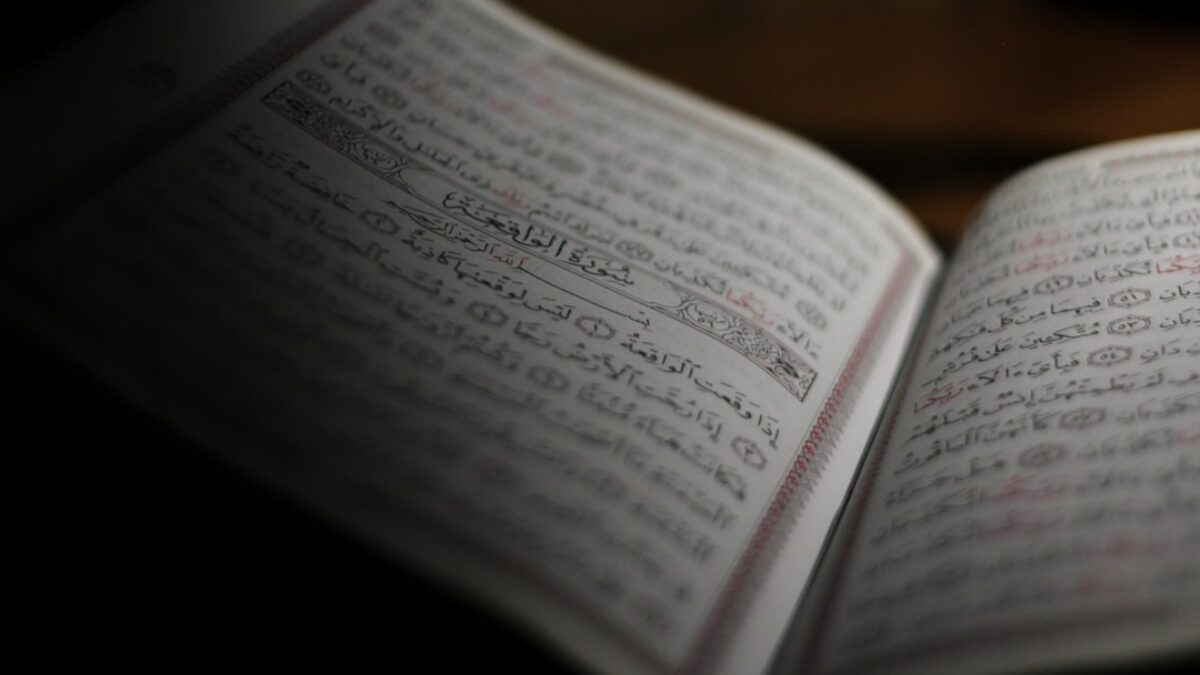Reciting the Qur’an is both a spiritual journey and a linguistic art. For many beginners, however, the first encounter with Arabic letters, unfamiliar sounds, and the intricate rules of Tajweed can feel overwhelming. The good news is that you can learn to recite your first surah confidently—even if you have no prior Arabic background—by following a clear, step-by-step approach that emphasizes correct pronunciation, rhythm, and meaning. This guide walks you through every stage, from recognizing the Arabic alphabet to mastering the fundamental Tajweed rules needed to perfect Surah Al-Fatiha, the chapter every Muslim recites in daily prayer.
Understanding Tajweed and Its Purpose
What is Tajweed?
Tajweed (تَجْوِيد) literally means “to make better” or “to improve.” In Qur’anic recitation, it refers to the set of rules governing the correct pronunciation of each letter, including its articulation point (Makhraj), characteristics (Sifaat), and how letters interact within words. Tajweed ensures the Qur’an is recited exactly as it was revealed to Prophet Muhammad ﷺ, preserving both sound and meaning.
Why Tajweed Matters for Beginners
- Accuracy: Mispronouncing a single letter can change the meaning of a word, potentially altering the message of an entire verse.
- Spiritual Connection: Proper recitation enhances khushoo’ (focus and humility) in prayer.
- Confidence: Knowing the rules removes hesitation and helps you recite fluently in front of others.
- Foundation for Future Learning: Mastering Tajweed early accelerates memorization (hifz) and enables deeper tafsir (exegesis) study later.
Key Components of Easy Tajweed for Beginners
1. Arabic Alphabet and Basic Phonetics
Before Tajweed rules, you must recognize the 28 letters of the Arabic alphabet, their individual sounds, and how they change shape depending on position (initial, medial, final, isolated).
Letters Grouped by Articulation Point
| Articulation Zone | Letters (Examples) | English Approximation |
|---|---|---|
| Throat (Halq) | ء ه ع ح غ خ | “Ah,” soft “h,” voiced “ayn,” breathy “ḥ,” gargle-like “gh” |
| Tongue (Lisan) | ت د ط؛ ث ذ ظ؛ ج ش ي | “t” vs emphatic “ṭ,” “s” vs “th,” “j” vs “sh” |
| Lips (Shafatain) | ب م و ف | “b,” “m,” “w,” “f” |
| Nasal Cavity (Khayshoom) | Nun with Ghunnah (ن with nasalization) | Hum through nose |
Quick Practice Drills
- Read each letter aloud 10 times while looking at its shape.
- Record yourself on your phone and compare with a Qari’s recitation (e.g., Sheikh Al-Husary).
- Use flashcard apps like Anki with audio to reinforce sound-letter links.
2. Essential Tajweed Rules for Surah Al-Fatiha
Noon Saakinah & Tanween (ٍ ٌ ً)
These produce Izhaar, Idghaam, Iqlaab, or Ikhfaa depending on the following letter. In Surah Al-Fatiha, watch for Tanween in words like ʿalameen (عَالَمِينَ).
- Izhaar (clear sound): If followed by throat letters, pronounce the “” clearly.
- Ikhfaa (hide): If followed by 15 other letters, create a nasal hum without fully articulating “.”
- Idghaam (merge): If followed by ي ن م و ل, merge the “” into the next letter with ghunnah.
- Iqlaab (flip): If followed by ب, change the “” to a hidden “m” sound.
Meem Saakinah Rules
Two rules apply:
- Ikhfaa Shafawi: When Meem Saakinah is followed by ب, hide the Meem with a light nasal sound.
- Idghaam Shafawi: When followed by another Meem, merge them with ghunnah.
Lengthening (Madd)
Recognize Madd letters ا و ي when they appear without a hamzah or sukoon after them. Surah Al-Fatiha contains Ar-Rahmaan with a natural two-count Madd.
Qalqalah (Echo Sound)
Letters ق ط ب ج د produce a slight bounce when they carry a sukoon. Listen for this in Maaliki yawmi-d-deen (مَالِكِ يَوْمِ الدِّينِ).
3. Step-by-Step Plan to Master Surah Al-Fatiha
Phase 1: Listening and Shadowing (Days 1–3)
- Pick one reliable reciter and listen to Surah Al-Fatiha at 0.75× speed.
- Repeat each ayah immediately after the reciter (shadowing) 10 times.
- Focus on matching rhythm, not just words.
Phase 2: Letter-by-Letter Breakdown (Days 4–6)
- Open a color-coded Tajweed Mushaf.
- Segment each word into individual letters (e.g., اَلْحَمْدُ = ا + لْ + حَ + مْ + دُ).
- Say each letter slowly, applying correct Makhraj and Sifaat.
Phase 3: Rule Spotting (Days 7–9)
Print the surah and use highlighters:
- Blue = Madd
- Red = Qalqalah
- Green = Noon Saakinah/Tanween
Recite slowly, pausing at each mark to apply the rule aloud.
Phase 4: Flow Practice (Days 10–12)
Recite the entire surah three times daily:
- Once at half-speed, focusing on rules.
- Once at normal speed, focusing on flow.
- Once from memory, visualizing the rules in your mind.
Phase 5: Teacher Review (Day 13 onward)
Book a 15-minute session with an online or local Tajweed teacher. Ask for a focused critique on:
- Makhraj accuracy of ع and ح
- Length of Madd in الرَّحْمَٰنِ
- Nasalization in عَالَمِينَ
Benefits and Importance of Starting with Surah Al-Fatiha
Spiritual Rewards
Prophet Muhammad ﷺ said: “Al-Hamdu lillahi Rabbil-‘Aalameen is the mother of the Qur’an, the mother of the Book, the seven oft-repeated verses.” Perfecting these verses multiplies the reward of every salah ten-fold.
Psychological Momentum
Finishing your first surah correctly gives an instant confidence boost, turning the Qur’an from “too difficult” to “I can do this.”
Universal Application
- Recited 17 times daily in fard prayers
- Required for every Jumu’ah, Eid, and janazah prayer
- Gateway to memorizing Juz ‘Amma and beyond
Practical Applications and Tools
Free Digital Resources
- Tarteel.ai: AI-powered real-time Tajweed feedback
- Ayat – Al-Quran Mobile: Verse-by-verse audio by multiple reciters
- YouTube Channel: “Learn Quran Tajweed with Maha” for slow-motion breakdowns
- Quizlet Decks: Pre-made flashcards for Surah Al-Fatiha keywords
Weekly Practice Schedule Template
| Day | Task | Time |
|---|---|---|
| Monday | Listen & shadow | 10 min |
| Tuesday | Letter drill | 15 min |
| Wednesday | Rule spotting | 15 min |
| Thursday | Flow recitation | 10 min |
| Friday | Teacher review | 15 min |
| Saturday | Record & self-critique | 10 min |
| Sunday | Rest or bonus revision | 5 min |
Creating a Dedicated Recitation Space
- Choose a quiet corner with minimal echo (carpeted rooms work best).
- Keep a small bottle of water for throat hydration and a miswak for Sunnah practice.
- Post a large print of Surah Al-Fatiha with color-coded Tajweed symbols on the wall.
- Use noise-cancelling headphones to isolate the reciter’s voice during practice.
Frequently Asked Questions
What if I can’t pronounce the Arabic letters perfectly?
Start with closest approximate sounds but schedule regular check-ins with a qualified teacher. Many letters (like ع and غ) require gradual muscle training; consistent daily practice—even 5 minutes—can retrain your tongue within weeks. Record yourself monthly to track improvement, and celebrate micro-wins such as holding the Madd for exactly two counts.
Is it necessary to learn Arabic grammar before Tajweed?
No. Tajweed is primarily phonetic, not grammatical. While understanding word meanings deepens spiritual impact, it is not a prerequisite for correct pronunciation. That said, learning basic Arabic vocabulary (e.g., Rabb = Lord) helps you internalize pauses and emphasis intuitively.
Can I rely solely on mobile apps to learn Tajweed?
Apps are excellent supplements, but they cannot detect subtle errors like a human ear can. Use them for daily drills, but schedule at least one live session (in-person or Zoom) every two weeks. A teacher can instantly correct tongue placement that an app might miss.
How long does it realistically take to master Surah Al-Fatiha?
Most dedicated beginners achieve acceptable accuracy in 10–14 days by following the phased plan above. Mastery (no hesitation, perfect Madd, melodic flow) typically requires 4–6 weeks of consistent 15-minute daily practice plus weekly teacher feedback.
What if I forget the rules during prayer?
In fard prayers, intent (niyyah) and effort count more than technical perfection. If you cannot recall a rule, recite at moderate speed and make a mental note to review it afterward. Over time, correct habits formed during practice will transfer automatically into salah.
Is there a difference between Tajweed and tarteel?
Yes. Tajweed ensures each letter is given its right, while tarteel refers to the measured, rhythmic style of recitation recommended in Surah Al-Muzammil (
























Post Comment